The article Home Computers Behind the Iron Curtain sparked a lot of interest, which made me very happy. Therefore, I decided to introduce more computer curiosities from the Iron Curtain period, especially from the former Czechoslovakia (CSSR).
As I mentioned in the previous article, the lack of spare parts, literature and technology in Czechoslovakia forced geeks to solve it themselves: by improvisation and what we would today call “hacking.” Hobbyist projects of one person or a small party was eventually taken over by a state-owned enterprise, which then began to manufacture and deliver to stores with some minor modifications. These projects most often involved a variety of peripherals that could only be found in the Czechoslovakia with great difficulty.
Much like the production of components, the production of peripherals was also distributed throughout the eastern block so that each country was specializing in certain types of peripherals. For example, East Germany produced matrix printers, and Bulgaria made floppy disks drives. This meant industrial enterprises had to wait for vital computer parts, because the production in another country was not sufficient to cover even the local requirements, let alone the home user.
BT-100
If you had brought a computer like a Spectrum or Atari from the west without a printer, you had almost no chance to get one in the CSSR. You would manage to scavenge some discarded matrix printer through your network of friends, but then you stumbled upon the need of connecting it through non-standard interfaces and coding drivers for it. You would consider yourself lucky when the printer used a Centronics interface and standard Epson control codes. Therefore, various attempts arose to build a printer at home. You think that’s impossible?
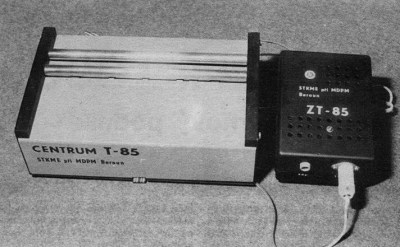
In larger cities, clubs s formed, covered officially by the only national youth organization, but they were mostly free of any ideology. They congregated modelers, electrical engineers, computer enthusiasts and other tech lovers. These clubs often had better ways to obtain some of the technology or more expensive devices. In one such a club, the one-dot printer Centrum T85 was born. After several modifications to the mechanical parts and electronics, Tesla (an electronics manufacturer mentioned in the previous article) began its production under the name of BT-100.
The BT-100 was a very simple printer, which consisted of two motors and one relay. One motor rotated a pinch roller and pushed the sheet of paper, the other one pushed a trolley with a print head which had an electromagnetically controlled blunt tip. The tip rode across the paper left and right and clicked into the paper to print a dot. The printer also had two wheels with notches which generated synchronization pulses.
The printer did not use any ribbons. Printing was achieved by placing a sheet of paper along with the carbon copy paper under the rollers. An imprint was made on the paper where the print tip clicked. This printing technology has given rise to a fitting nickname “runaway nail”.
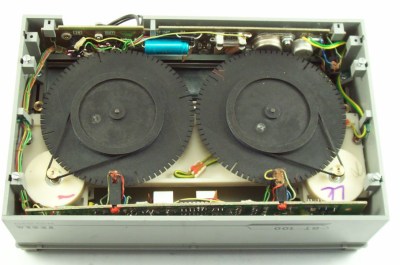
The internal wiring of the printer was really primitive: 3 motors drives, excitation coil for pulling of the print tip and optoelectronic sensors to offset the paper, carriage and range. The interface used four input signals (carriage left, carriage right, paper feed and tip pulling) and four output signals (signal range, offset paper pulse sensor and two pulse head movement sensors). The interface truly was extremely simple and all of the work was offloaded to the control program.
The printer could print unidirectionally or bidirectionally (it took about 10 minutes to print one A4 paper, or 20 minutes with unidirectional printing). Even though the printer itself was a technological hack, it was modified even further by its users. They increased the speed of head movement, added notches to increase the printing accuracy (without these adjustments it had a resolution of 480 dots per line, therefore approximately 60 DPI) and made other adjustments to increase the speed and print quality. As a curiosity I will mention a program which had spread over Czechoslovakia – it was able to elicit a simple melody from the printer by using precisely timed controlling.
This printer certainly was not the best tool to print a source code or any documentation. It managed to print just a few pages at a time, and even that took tens of minutes:
A similar printer called Gamacentrum 01 used a slightly different design. It was equipped with two printing tips (two “nails”) on one print head, spaced at a distance of half a page between each other. During printing, each tip printed a half of the page. The print quality was only slightly higher than that of BT-100, while the printer still cost three times as much.
Alfi
Around 1925 in the former Czechoslovak Republic a kit for children was created, based on connecting perforated metal sheets with screws and nuts. This kit was called Merkur. Later in the 60s it was being exported throughout the Europe and several generations (without exaggeration) of children in Czechoslovakia had grown up with it. The kit is easily accessible, while allowing to assemble almost anything with a plenty of imagination. The inventor of contact lenses [Otto Wichterle] created his first prototypes on a centrifuge, which was made from this kit.
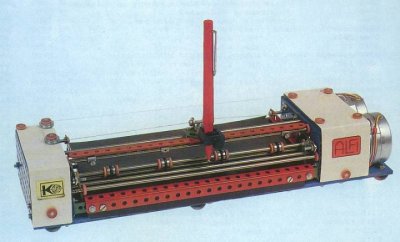
In the 80s an engineer Vladimír Doval built a simple plotter from this kit and called it Alfi. Its structure was somewhat more sophisticated than the above-mentioned BT-100. The author used two stepper motors (one for paper feed, the other to move the pen) and electromagnetically controlled lowering of the pen. Assembly instructions were then published in a magazine of “Science and technology for youth” (VTM), and shortly after these plotters began to appear on the of tables Czechoslovak computer enthusiasts who rummaged through their attics, looking for dusty boxes with their childhood kit. A simple interface was used to connect the plotter, built mostly with a 8255 circuit.
Alfi was not confined to the drawing pen – some even used home-built optical pens and created primitive scanners. Alfi was indeed very simple, as it was again fully reliant on computer software, but the quality was very decent – speed of 50 mm per second and minimum step of 0.15 mm.
Alfi plotter lives to this day, as you can see in this video: https://www.youtube.com/watch?v=LBip6q0qjDk
If you did not want to build a plotter yourself, you had several options at the end of the 80s. You could, for example, buy a plotter Minigraf 0507 (manufactured by Aritma) or series XY41xx plotters (manufactured by Laboratory equipment). They offered more or less the same performance as Alfi, and the top model XY4160 contained its own processor and understood the HPGL language.
SP210T
In the previous article I already mentioned that floppy disks weren’t among the usual stock in a socialist market. Floppy drives were produced mainly in Bulgaria and their production was definitely not enough to meet demand. In Czechoslovakia they largely belonged to industrial computers and the “home” computer category had to settle for an ordinary cassette tape.
Despite this, many diverse floppy drives emerged. For example, a school computer IQ-151 was assembled with a 8″ floppy drive (aka “teacher’s computer”) and a network of several other computers (“student’s computers”) were connected to it. They had a clone of CP/M on them, along with WordStar text editor and a Pascal compiler. Later, after the regime fell and imports from the world were permitted and renewed, a mass-produced drives as well as other computers were created.
Only some of the lucky ones brought a floppy drive (usually Commodore) from the West countries for their computers. The others obtained or built a Spectrum Betadisk. Its custom interface was not much of a problem, because instructions got published in the magazines, but the drive itself was hard to get a hold of, you would need an acquaintance or bring it from abroad yourself.
The most common peripheral remained a cassette recorder for a long time, and a lot of those among the people have various provenance and quality, ranging from weird plastic experiments to almost professional pieces. Tesla could show off their own cassette deck SM260, which had a surprisingly decent design and that was certainly an exception for Czechoslovak electronic devices at that time. Tesla then modified their cassette deck, removed power parts of the amplifier, and the result was a “data recorder” SP210. It had the same structure, but a slightly different design: the front part received speakers, the tape recorder contained a microphone through which you could make a preamble of the recording, and it was even possible to receive control from a computer directly using a simple TTL interface, including rewinding and recording. There was even a module which allowed the computer SAPI-1 to use SP210 as a recording device for CP/M.
And since the removal of the audio bits left a relatively large space unused inside, the creator thought to incorporate the previously mentioned printer BT-100 into that space. Thus a model SP-210T was created.
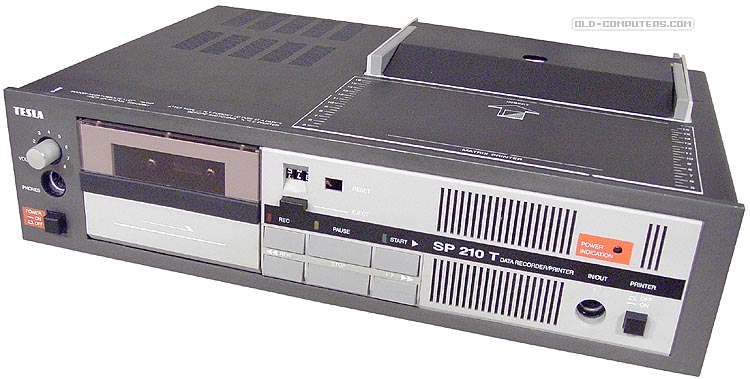
Tesla created a very surreal hybrid between a cassette tape SP210 and the BT-100 printer, and called it SP210T. The SP210T had a recording device and printer combined into one device. What the West would consider a curiosity was in Czechoslovakia a serious product. This printer had been gradually connected to nearly every computer in Czechoslovakia, ranging from ZX Spectrum and Atari to the Czechoslovak PMD-85 computer.
But the SP210T was not the last word in technology with the same design: In 1990, production began on a floppy drive PMD-32 (as the name suggests, it was a peripheral of the PMD-85) – again, in the same box as the SP-210T. It contained two 5.25” drives, controller based on FDC i8227 and DMA i8257 and a control circuit, where all the work was taken care of by a 8080 processor. The PMD computer communicated using an interface based on 8255 circuit.
Computer Mouse
The creators of this homebrew computer mouse rightly thought that the mouse is nothing too difficult. It’s just a ball that transmits its movement to vertical rollers, and this movement somehow gets measured. They sat down and put together their own mouse, which kind of resembles a feverish handyman’s dream. Judge for yourself:
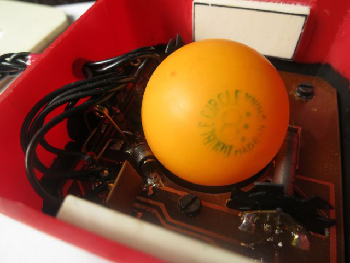
As housing for the mouse they used plastic kitchen spice can. Inside the can they placed a circuit board on which were two mutually perpendicular metal rollers. On both rollers there was a jagged aperture made from a thick paper. Its position was read using a LED and a pair of phototransistors. There were two buttons at the front. Each button was created from a cap screw and a pair of shortened and bent safety pins. (Why? Well, because micro switches were unobtainable for a long time in Czechoslovakia!) The ball, an important part of the mouse, was replaced by a ping-pong ball. The cable was made as an interweaving of eight wires.
All of this was manufactured and supplied as a kit. You could buy it in the store and then assemble at home. Here is a construction manual (PDF, in Czech).
The most serious enthusiasts used ingenious ways to fill the ping-pong ball with heavy ballast for better fit and movement transmission.
This peripheral was very simple and acceded to some parallel interface. The rest had to be taken care by the software. The proprietary driver, a program that has been supplied with this kit used interrupts for determining the positions of apertures. And since interrupts on the Spectrum had a frequency of 50 Hz, it meant that the scanning was imprecise during faster mouse movements. Therefore, the authors suggested the use of a certain diagram, which increased the frequency of interruptions.
There have been perhaps 5000 of these kits created, which is a huge number in the Czechoslovak situation where computer accessories for small computers were produced in a series of several hundred.
 I got my mouse in a little curious way: Sometime in 1988, the Czechoslovak authorities have decided to support young people working with computers, and so the idea of an international game was born. A text game City Of Robots was made, which was then ported to several platforms (Spectrum, PMD-85, IQ-151, Sharp MZ-800 and Ondra) and was distributed to interested parties on tape. To make sure everyone had the same conditions, the game required a password, which was to be announced at a specified date in the main news broadcast on a state television.
I got my mouse in a little curious way: Sometime in 1988, the Czechoslovak authorities have decided to support young people working with computers, and so the idea of an international game was born. A text game City Of Robots was made, which was then ported to several platforms (Spectrum, PMD-85, IQ-151, Sharp MZ-800 and Ondra) and was distributed to interested parties on tape. To make sure everyone had the same conditions, the game required a password, which was to be announced at a specified date in the main news broadcast on a state television.
Unfortunately, due to authors mistake, the password could be read in a binary file, so it has spread throughout Czechoslovakia before the game even started. And on that particular day in the news the announcer said this unfortunate password (it was “konvalinka”, or “lily” in English) and added “for those who do not know it yet”. And because there weren’t even conditions for everyone, the winners were drawn, and I received the mouse kit as a prize.
Czechoslovakia also manufactured computer mice, of course, at the very end of 80’s, like 3WN16605/16607.
In Conclusion
Creating peripherals for home 8-bit computers and their small batch production in Czechoslovakia after the fall of the Iron Curtain lasted until the early 90s. With the collapse of socialism it was possible to produce these accessories legally, so new manufacturers seized the opportunity and began to supply larger series of universal interfaces with an Intel 8255 or audio peripherals such as the General Instrument AY-3-8912 or the Philips SAA-1099. But the opening of the border also meant an invasion of PCs, tech enthusiasts switched to Amiga, and eight-bit era slowly ended…
I certainly did not describe all former peripherals that were made or homemade in Czechoslovakia. We can introduce other computer curiosities of the “socialist bloc” some other time – from the joystick built from doorbell buttons to the clone of ZX Spectrum, where the circuit ULA was replaced by several dozen of standard TTL 74xx series chips…
About The Author
 [Martin Malý] works as a media technology consultant and team leader of developers for some Czech newspapers. He has experience from startups and did a lot of web projects (e.g. was a Lead developer, Programmer, Administrator, Manager and Ideologist for a cutting edge Czech blogging system called Bloguje.cz).
[Martin Malý] works as a media technology consultant and team leader of developers for some Czech newspapers. He has experience from startups and did a lot of web projects (e.g. was a Lead developer, Programmer, Administrator, Manager and Ideologist for a cutting edge Czech blogging system called Bloguje.cz).
His biggest hobby, beside programming, is microelectronics and old computers. He did some task programming on railroad engines, based on microcontrollers (8051 family, AVR, Microchip) and some “homebrew” gadgets, computers etc. He joined his two hobbies together in ASM80.com – an online IDE and assembler for 8bit CPUs.
[Martin] is an Evangelist and Teacher of New Web Technologies (OpenID, OAuth, cloud computing, HTML5, Node.js, Coffeescript and other stuff) as well as Evangelist of HTML5 development for mobile devices.
He does quite a bit of writing – starting with some juvenile textperiments, continuing through a series of blogs and online magazines, and he ended up as an Editor-in-Chief of zdrojak.cz – an online mag about web technologies.








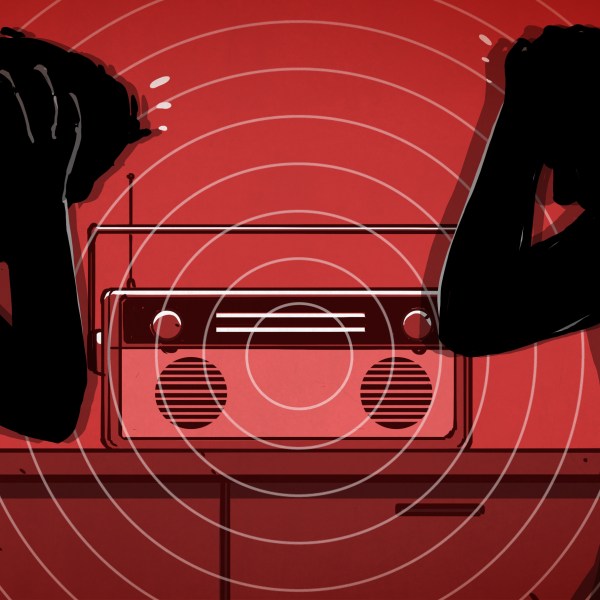






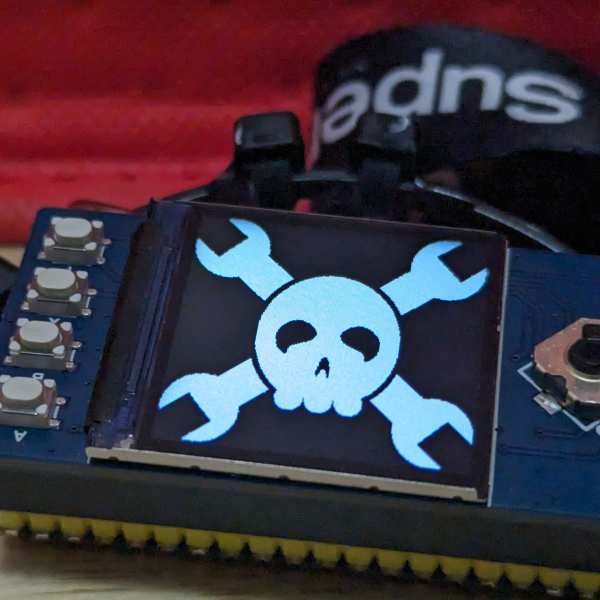
Where there’s a will, there’s a way!
(y)
I thought I had it rough with a 9 pin printer. “In Soviet Union, printers have ONE pin!”
The video is ripe for one of those “You ungrateful kids don’t know how good you have it…” polemics.
And get off my lawn! B^)
There was a 2 pin printer for the ZX-81 or ZX spectrum. It was quite similar and used metalized paper, which was burned off by the 2 printing electrodes (like EDM). The 2 needles were mounted on a continuously running belt. It had only 100mm print width, was slow and had quite a jaggy output. Every second picel line was printed by the other needle and if their spacing on the belt was not perfect, there was jitter in the letters. Probably the output of the T-85 in bidirectional mode looked similar.
Oh yeah, I do remember these. I still have Alfi somewhere at my parents – I have managed to make it work, but it was incredibly fiddly to align. Merkur is not really known for precision parts and this was really pushing its limits. It also didn’t use any belts but fishing line to move the pen – the proper tensioning of the line was crucial. Unfortunately I have got this fairly late, in 1994 or so and I didn’t have any interface to connect to my Didaktik M at the time neither nor any software to really drive it, so it never got used much after I have moved to the university and to PC machines.
There is one more plotter not mentioned in the article – Didaktik Zeta (http://www.homecomputer.de/images/infos/east-europe/didaktik-alfa-plotter.jpg ). This was sold to schools, for use in their computer labs, along with the Didaktik Alfa/Beta computers. Unfortunately, I have never seen one in use, they were fairly rare.
The SP210T deck is something few people actually had, because it wasn’t available in retail, if I remember right. Those were mostly available only through clubs and schools, where they were commonly found with the PMD-85s and Didaktik Alfa setups in labs. I had one “borrowed” from my mom’s school where they had no use for it. I have made it to work, but the deck really loved to “eat” tape, ruining your data in the process. It was also known for issues with the control electronics, such as the Play function not staying latched – it worked while the button was held down, but immediately stopped afterwards. All kinds of hacks were used to work around that …
An extra info about the remote control option available for these decks – it had a DIN connector for TTL steering on the back, but I have never seen that being set up and used in any of the school labs I have been to. The most common school computers of the era – PMD-85, Didaktik Alfa – didn’t even have provisions to control them. While it was technically possible (the computers had built-in 8255 interfaces) there was no firmware support for it and no standard wiring. All the decks were always manually controlled.
Another common hardware not mentioned in the article is the Tesla M710A tape deck (http://audiotechnika.blog.cz/1008/tesla-m710a-tapedeck ). This one was a common peripheral in the school labs later on, it was a lot smaller than the large SP210T and SM260. Another Tesla product, unfortunately also with a very unreliable and problematic tape drive.
The BT100 … Oh dear. I have used the one from SP210T deck and it was horrible. You really needed the patience of the saint for this thing. First of all, it was almost impossible to load the paper with the carbon copy sheet under the rollers without smudging the paper all over. Then the printing was incredibly slow – as mentioned in the article, one A4 took about 20 minutes. Oh and when 2/3rds down the page and some 15 minutes from starting the print, the rollers slipped and jammed or tore the paper against the side, ruining your print … Or the software has crashed, forcing you to start over (there was no way to “re-home” the printer and continue where it left off). Or another from the milions of issues that this thing had happened, forcing you tear your hair out.
I don’t think I have ever got more than a single A4 page without something going wrong out of this thing. The owners of the plotters were way better off, even the Alfi could produce better output with less hassle. Towards the end I have got my hands on an old Epson 9pin dot matrix printer and that was a world of difference.
Good old times :)
“Oh and when 2/3rds down the page and some 15 minutes from starting the print, the rollers slipped and jammed or tore the paper against the side, ruining your print … Or the software has crashed, forcing you to start over…millions of issues…”
Sounds like 3D-Printers nowadays :-)
Did you need firmware support for TTL controlling the tape deck? You’d just need to OUT X, Y. Most of the Soviet computers used cloned Z80s right?
The actual numbers would vary, but once you know them for your computer, that’s all. Most BASICs should support OUT instructions. Just type it in to start, and again to stop. Etc. You could even put the code at line, say, 1000, so GOTO 1000 would play, GOTO 1020 would stop, etc. I thought you Eastern chaps were supposed to be expert hackers!
Just OUT X,Y …. you make it sound so easy. Perhaps acquire one of these drives and show us all how simple this firmware job is.
It’s not a firmware job! It’s one line of BASIC! Or about 4 of machine code. Most BASICs have an OUT instruction, on Z80 machines at least. X and Y should be in the manual, or available to look up somewhere. If not, there’s only 256 addresses to try. Try them til the tape drive starts doing stuff, then figure out the bit patterns by experiment.
It’s really easy! Much easier than a lot of stuff you see on here.
There was actually a one pin printer sold in the US for a short time. I don’t remember the details, but it was commonly called the woodpecker.
… reminds me of experiments where we ran aluminium shim through a needle printer with the tape removed… images you could FEEL (print heads didn’t last long though)…
I’d wonder if you can use such a sheet for old-fashioned ink printing.
The sheet would be more soft-bumpy than clear and defined, so it’d probably need lots of other bits of hardware (as in wood and bits of metal, not computer). And even then I bet it’d be variable.
There was some old technology involving a tattoo-like needle pen that cut into thick wax paper. That became a stencil you could push ink through, to make many copies onto normal paper. There was some sort of press-like machine to do the duplicating. I think Edison might’ve invented it. Or claimed to, at least.
If you sharpened the nail, you might be able to get something like that. Tho as has been mentioned, any sort of mass-production printing machines were heavily regulated under totalitarian regimes.
I remember that there was a printer that had a single hammer, but it was used in combination with a special splined “drum” behind the paper. The drum would rotate (while the paper was held stationary), and the timing of when the hammer hit it determined the vertical position of the dot it made (according to where it hit the spline). This allowed the printer to print one character height’s worth of dots before moving the print-head horizontally to print the next column of dots.
The Commodore MPS-801. I had one in the day as a hand-me-down, and it was terribly loud and slow. The drum had many indentations in it from all the letters it had printed previously.
Around the early 80s in europe, disk drives were expensive even if they were possible to buy, so some cheap mono portable tape casette players saw a gap and redesigned their cassette players a little and branded them data casettes in the same manner. Sometimes we took regular cassette players and adjusted the alignment of the read heads through a tiny hole to make them more reliable too. I can still hear the screams of data whilst trying to tune by ear. I even remember some magazines distributing thin 45rpm records with their cover disks instead of cassettes, and having to try and record the record onto tape but without noise so it could still load afterwards :)
As for the printers, again, great improvisation, people always find a way. Around that period Sinclair who made the zx81 and spectrum amongst others had their thermal printers, but that required a special paper and was very narrow. The carbon sheet idea seems much more useable and less proprietory.
At the same period, a lecturer at college was still teaching elecrical theory by handing out pale blue copies of formulae run out on a mimeograph, because he said it was less expensive to run than a xerox :)
Sometimes I look back and am shocked how far we have come, but its only because we can stand on the shoulders of giants.
Fascinating subject, please write more if HaD ask :)
There was something called KPD-1 (or KDP-1?) that was pretty neat – it used standard casette tape, and added a format to it, basically parting the tape to sectors and mimicking a floppy drive. It involved a lot of rewinding, but I saw it working, and when you didn’t need a lot of random sector reads, it was relatively usable :)
I had some walkman style cassette tape players that automatically flipped the tape for me when they reached the end of one side. If such auto flipping and your KPD-1 style sectors had been used together we could have had huge magnetic drum style storage!
Thanks for article.
Remember how i wrote image printing routines for BT-100 for multi color printing – multipass with differently coloured carbon papers (there was black, red, blue and green available).
The printer itself was insanely slow, but better than nothing and i printed dozens of documentation pages on it.
BT-100 was also nicknamed “Splašený hřebík” (runaway nail/crazy nail – not sure how to translate it form Czech)
@Honza-“Remember how i wrote image printing routines for BT-100 for multi color printing – multipass with differently coloured carbon papers (there was black, red, blue and green available).”
When I was reading the article I thought to myself, “I wonder if they ever did colour prints with different colour carbon papers”, and you did, cool. Could you print multiple copies of a print job by using two pages and two carbons or was that just asking for trouble? Also it seems to me that if the “nail” had more striking force this printer could have been used to print Braille. I have to admit you darned commies were pretty smart! :)
If I were marketing “Splašený hřebík” today, I’d call it “wildnail”. Funny how neither the article nor the comments mention that any technology that would be capable of mass-producing printed materials (by copying or re-printing) was heavily restricted by the regime in Czechoslovakia (and I am sure in other Worker’s Paradises(TM) as well). I remember having printed my dissertation in 1989 on a Hungarian clone of a 9-pin Epson printer, illegally borrowed from a research institute. I did it in CP/M on Sharp MZ-800 (8-bit Z-80 @ 4 MHz) and had to write my own graphics driver for it in order to print non-ASCII characters (Žral kůň býl, šláp na mříž, úd též ťuk, čímž ó ďas a změť). Those were the old, innocent days. Now this page (and your browser) takes UNICODE for granted…
I still have one BT-100 around here. I bought it in auction cheaply, I really couldn’t resist, though I was a few times in a mood to finally make USB interface to it, allowing printing from PC.
You could bit-bang it through an FTDI module (no embedded code needed)… :] (http://www.ftdichip.com/Products/Modules/DevelopmentModules.htm).
I always assumed that the USSR hackers lived like they show post apocolypse tech mages live… Monitors with all exposed boards hanging on the wall. Exposed circuit boards with wires going from board to board…. Tinfoil umbrella as a dish antenna…. They jump up and yell they are “invincible” all the time….
And as the NSA continues to invade the privacy of US citizens, this is the future of hacking in the USA…
I taught a summer course for retirees on space exploration for many years. I wanted to find a film on space exploration from the [then] Soviet viewpoint, which I figured they must have, because space was such a big propaganda point for them. So I wrote to the Soviet Embassy, asking how I could get a film. Two YEARS later, I got a reply. At a time when word processors (not yet desktop computers) were becoming ubiquitous in U.S. offices, the letter was typed on a manual typewriter with a ribbon so old it looked like Lenin had typed his high school term papers on it. No, they did not know of any films.
“A text game City Of Robots was made, ”
Wasn’t it Czechoslavakia that gave the English language the word “robot”?
Robot: “one who toils”, by Josef Čapek, a painter, brother of writer and playwrite Karel Čapek, is credited to have incepted the word for Karel’s play “R.U.R.” about slave androids.
The other words that I know of that were (possibly) adopted from Czech into English are: howitzer, pistol, and lomcovak. Czechoslovakia has been (relatively) big on arms and aeronautics.
http://en.wikipedia.org/wiki/Robot, http://en.wikipedia.org/wiki/Howitzer, http://en.wikipedia.org/wiki/Pistol, http://en.wikipedia.org/wiki/Lomcovak
I saw a female pilot perform a Lomcovak as a Grande Finale about 30 years ago at an air show, the announcer called it a “Czechoslovakian Curve”. Up until that moment, I didn’t think it was even possible.
The Merkur looks a lot like an Erector Set from roughly the same era. Wonderful toy.
Merkur is a great erector-like toy, still available for kids of all ages; the only thing unusual for U.S. is that it is metric. I had it when I was single-digit age, and got it for my son several years ago (http://www.merkurtoys.cz/en/); he loved it.
Merkur also looks a lot like Meccano that the UK had years ago before the Frogs brought it and made it all namby pamby…
I may have to indulgent my self as I never had Meccano as a kid.
Both are derivatives of Meccano, which dates from 1898, and is still going strong!
http://en.wikipedia.org/wiki/Meccano
Re the mouse, didn’t they have pool or snooker balls in Czechoslovakia? What is it about ping-pong and communists?
These efforts can run concurrently and integrate.
Peripherals beyond the great NATO firewall
IOT beyond the Great Firewall of China